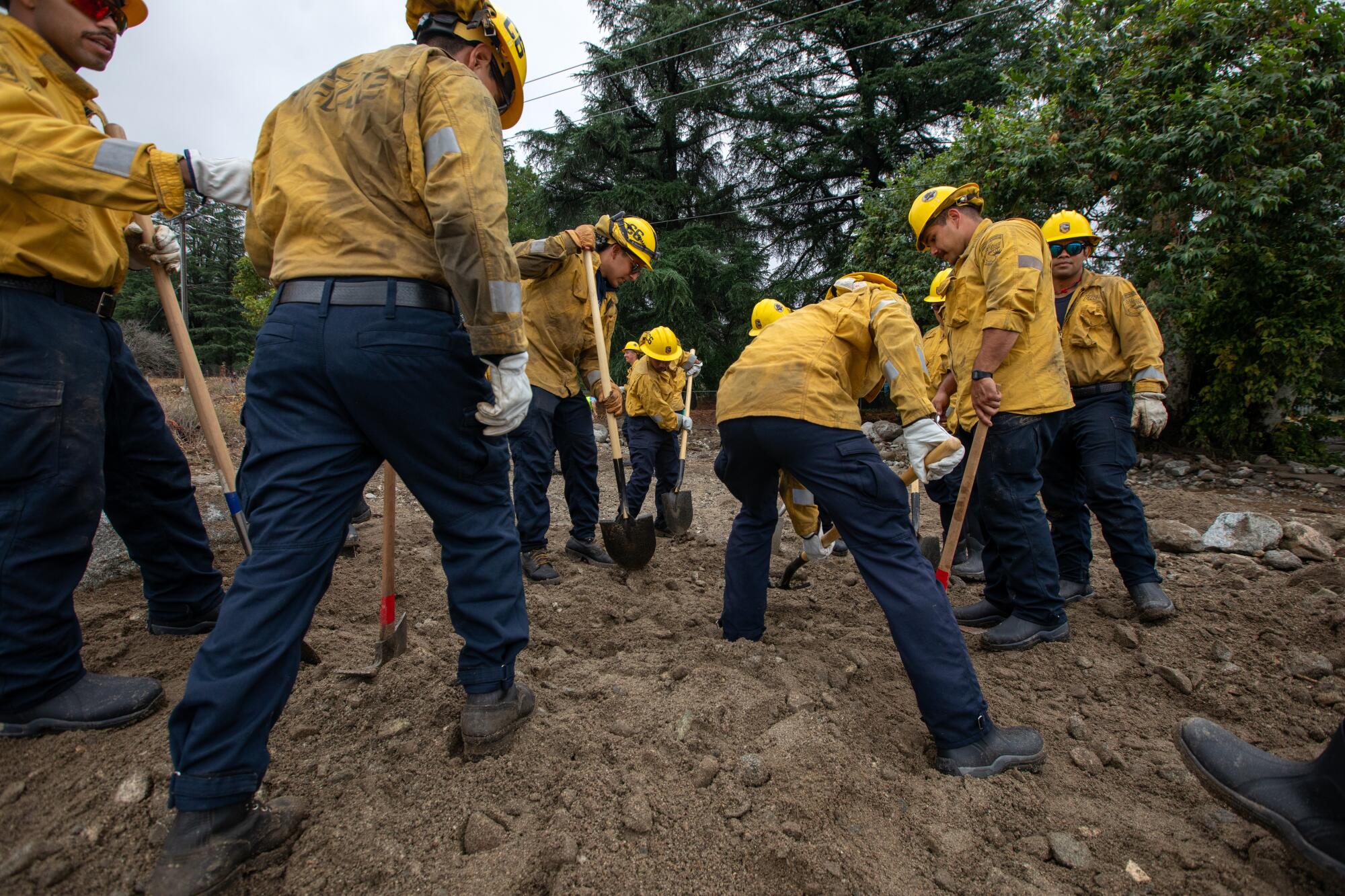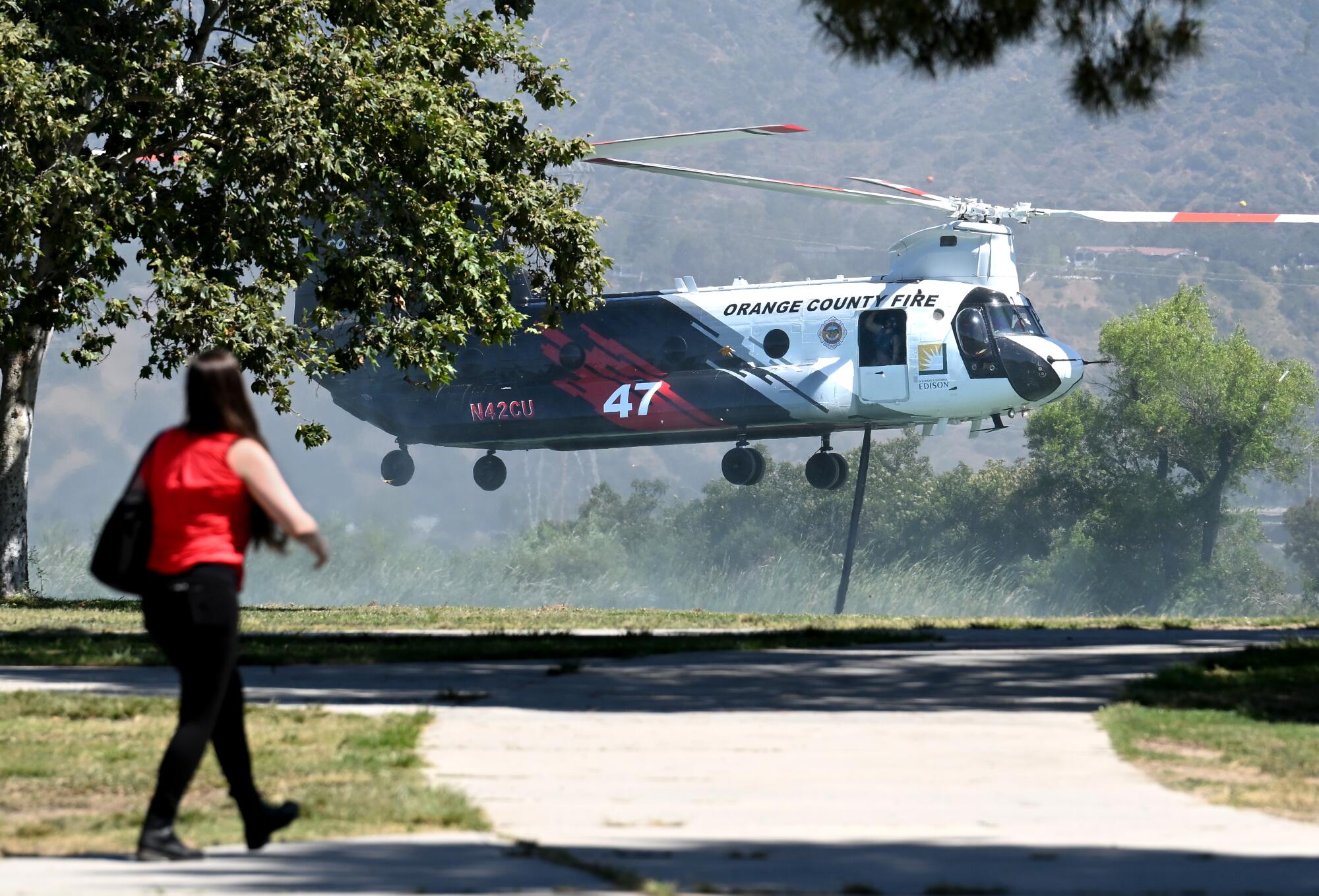California has entered fall amid notably moist conditions that have left some wondering whether this year’s fire season has officially fizzled.
The state has seen about 276,000 acres burn so far this year — significantly less than the five-year average of 1,158,028 acres for the same year-to-date period, according to the California Department of Forestry and Fire Protection.
Experts said much of the mildness can be attributed to historic rains that soaked the state this year, including more than 30 atmospheric rivers that caused major flooding and record snowpack in the winter and spring, and a rare tropical storm that barreled through Southern California in August.
But while it’s tempting to call this year a washout, recent storms have also spurred new vegetation growth that could act as fuel, Cal Fire officials said. What’s more, gusty fall winds that have been known to fan flames have yet to arrive in full force, and are most common from September to May.
“Fire season is not over,” said Nick Schuler, Cal Fire’s deputy director of communications and emergency incident awareness. “The important thing that people recognize is living in California, we live in a Mediterranean climate where wildfire is always a threat.”
Still, the season has been undeniably mild so far. Should those conditions persist, California will experience its second consecutive year of mild fire activity. Last year, fewer than 363,000 acres burned.
The two years prior, 2020 and 2021, were California’s worst wildfire seasons on record, with 4.3 million and 2.6 million acres burned, respectively.
Park Williams, a climate scientist at UCLA, said he thinks California may be “out of the woods” for a very large forest fire this year, but that all the new growth spurred by the rains could make for dangerous conditions in 2024.
“We know that there’s a lot of fuel available, but we also know it’s really wet, and so it would take a pretty big, bad-luck-convergence of factors to create fire this year,” Williams said. “I think it’s much more likely that next year is the big fire danger year.”
This year has been exceptionally damp, with statewide precipitation now at 141% of normal, according to the Department of Water Resources.

Cal Fire crews shovel mud from an Oak Glen driveway that was inundated by Tropical Storm Hilary in August. Hilary and a series of atmospheric rivers that soaked California at the start of the year have kept the state exceptionally damp during this fire season.
(Francine Orr / Los Angeles Times)
Though Williams said he believes a large wildland fire is unlikely this year, it’s not impossible — particularly if a prolonged wind event arrives to dry vegetation before the winter rains appear.
Already this week, wind advisories were issued in Santa Barbara and Ventura counties, where sundowner winds delivered gusts of 50 mph overnight Wednesday and Thursday, according to the National Weather Service.
“When you have Santa Ana winds — winds that come from the east and blow to the west — it dries everything out,” said Schuler, of Cal Fire. “If you look at some of the largest fires in California’s history, especially Southern California, they started later in the year.”
The state’s fifth-largest fire on record, the Creek fire, ignited in September 2020 and burned about 380,000 acres in Fresno and Madera counties, destroying 858 structures.
Another of the state’s largest fires, 2017’s deadly and destructive Thomas fire, didn’t ignite until December that year. It burned 282,000 acres in Ventura and Santa Barbara counties, killing two people.
This year’s largest fire — the Smith River Complex burning near the Oregon border — has stayed under 100,000 acres, although the fire knocked out power to Del Norte County for nearly a month.
This week, an early season atmospheric river dropped 4 inches of rain in the area, helping to quell the blaze.
Aside from the wetter conditions, Schuler said state efforts are also making a difference — including new firefighting aircraft that can fly faster, carry more water and fight fires at night, and new artificial intelligence technology that is helping fire officials catch and respond to fires faster.

A CH-47 Chinook helitanker draws water through a snorkel during a demonstration in Irwindale in July. The helicopters can hold 3,000 gallons of water or fire retardant and can operate at night.
(Wally Skalij / Los Angeles Times)
California is also making gains on defensible space inspections, fuel-reduction work and prescribed burns, he said. (Fuel reduction includes removing vegetation from forest areas that could burn in a fire, while prescribed burns are fires that are intentionally set to similarly reduce vegetation.)
But with the threat of dryness and the potential for strong winds in the future, he said Californians should not let their guard down and should continue to clear vegetation from their properties and maintain defensible space.
“While we have seen cooler weather, it’s not a time to be lulled into a false sense of security,” he said.
Indeed, fire season has not been so mild everywhere. On Maui, Hawaii, a deadly blaze tore through the historic town of Lahaina in August and killed at least 97 people — the deadliest U.S. wildfire in a century.
In Greece over the summer, at least 28 people were killed as dozens of wildfires burned, including a July fire on Rhodes that sent more than 20,000 people fleeing for safety.
And in Canada, massive fires have burned nearly 40 million acres this year, spewing thick smoke that choked the East Coast and Midwest in some of the worst air quality they’ve ever seen.
Williams said those blazes exemplified how much “fire loves heat,” and noted that the summer was the hottest on record in the Northern Hemisphere.
He hoped officials were using the cooler, wetter conditions in California this year to finish as many fuel reduction projects as possible, but said ultimately, the rain is to thank for the mild season so far.
“Climate really runs the show in terms of how much burns — and at what intensity — in California and across the West,” he said.
This story originally appeared on LA Times

